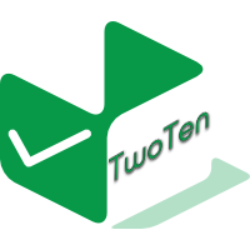I was asked to answer the question "What are the best child safe websites" over on Quibly. Answering it made me think a bit, so I decided to rework my answer for our blog. So, what are the best child safe websites?
That’s a surprisingly difficult question to answer in a useful way (sorry!). The nature of our business means we come into contact with lots of great content, but it’s often mixed in with content not suitable for younger children ("family safe" is not a logical Internet concept…) so we often can’t just say "go to these sites" to people who don’t have TwoTen in operation. The obvious example here is YouTube; lots of great content for toddlers, rather more content that’s only suitable for older children and of course a fair bit that’s only suitable for older teenagers or adults.
Sites that focus on serving younger children with entirely free to use content, like Kideos, tend to become derelict because the original maintainers lose interest. To be fair "free to use" for this age group means it costs the operators money as well as time to maintain the site as they can’t (shouldn’t…) be gathering data they can sell, nor are they likely to do well with ads.
There are active sites out there which actively provide content of various types, and these sites are a mix of fun and educational (sometimes on the same site!). But all of the active ones we could mention that have stood the test of time like Moshi Monsters or Poisson Rouge, have one feature in common other than their focus on younger children; they charge in some way. A charge is inevitable because there’s no other way to sustainably fund the maintenance and development of these sites, to ensure they remain safe environments as well as continue to work on new browsers, adapt to changes in technology, add new content and to generally improve month on month.
Every time you encounter a rich, entertaining and educational site for younger children, ask yourself how is it making money? If it’s good it’ll have to make money somewhere because the costs of maintaining a site like that is non-trivial, even if the operators personally have the skills and time – running a popular site with lots of content will cost upwards of USD1000/month just in hosting fees. Once you add in developers, esafety staff, systems administrators… That’s a lot of money and it has to come from somewhere.
Sites that provide some sort of service free to use tend to use 2 ways to fund them; either they advertise or they harvest data about their users that they then sell on in some way. Apart from pesky legal restrictions in some countries, most parents would be uncomfortable with the idea that their child is being "harvested", which makes that monetisation route tricky. Then the value of ads on sites used by younger children will be difficult to "prove" to potential advertisers, because most web ads these days pay per click on the assumption the click was intentional – which is hard to believe with toddler visitors; and/or likely to result in a sale, even harder to believe. And of course many parents don’t want their child targeted with more ads either!
So charging in some way for sites targeting children is basically inevitable. Charges for web sites/services are likely to become more common generally, as awareness of the maxim "if ain’t the paying customer, you’re the product" becomes higher turns people away from the purely free to use. It’s just that there are less opportunities for indirect revenue with younger children so the issue has become apparent earlier.
So, back to the original question (finally!). We’ve decided to start letting you know about sites we come across that are suitable for the children who TwoTen serve – so your child can enjoy them before we’re ready to make the home product available.
